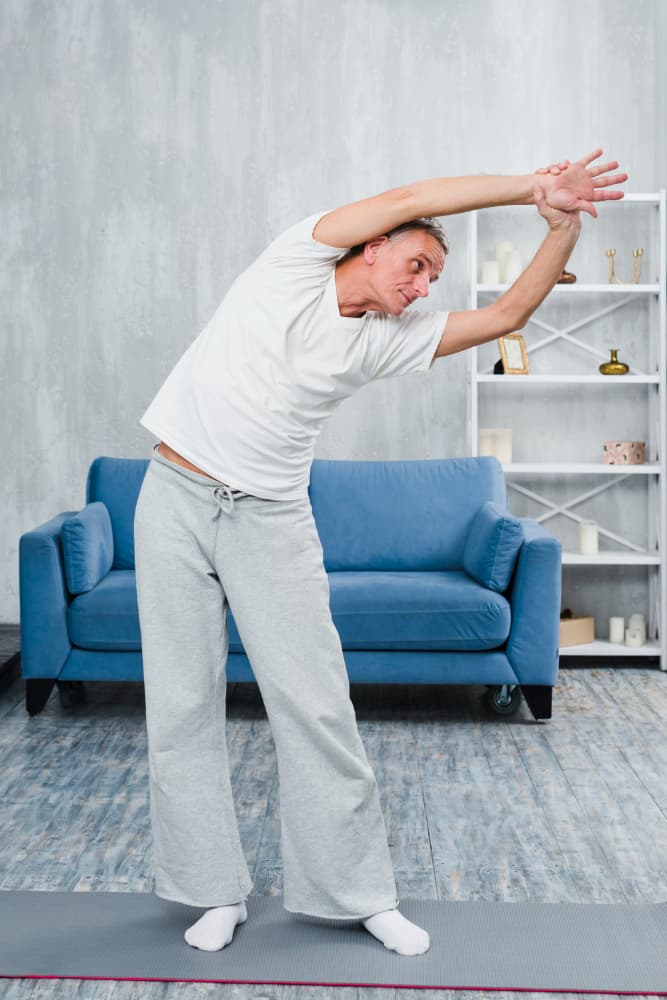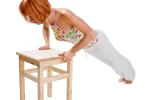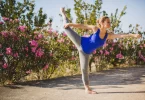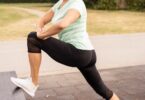Table of Contents
Introduction to Chair Yoga for Seniors
Chair yoga is a gentle form of yoga that is practiced while sitting on a chair or using a chair for support during standing poses. It’s perfect for seniors who may find traditional yoga challenging due to mobility or balance issues. By making yoga more accessible, chair yoga helps seniors stay active and improve their quality of life.
What is Chair Yoga?
Chair yoga involves performing modified yoga poses with the support of a chair. This practice makes yoga accessible to those who might struggle with getting on and off the floor. It’s an excellent way for seniors to enjoy the benefits of yoga, such as improved flexibility, strength, and mental clarity, without the risk of injury associated with more intense forms of exercise.
Benefits of Chair Yoga for Seniors
Chair yoga offers several benefits tailored to the needs of seniors:
- Physical Benefits: Increases flexibility, improves strength, and enhances balance.
- Mental and Emotional Benefits: Reduces stress, improves mood, and enhances mental clarity.
- Social Benefits: Provides an opportunity for social interaction and community building.
General Safety Tips
Safety is paramount when practicing chair yoga. Here are some essential tips to keep in mind:
Choosing the Right Chair
The chair should be sturdy, stable, and free of wheels. Ideally, it should have a straight back and no arms to allow for a greater range of motion. Place the chair on a non-slip surface to prevent it from sliding during practice.
Proper Attire and Equipment
Wear comfortable, loose-fitting clothes that allow for a full range of motion. Barefoot is often best for yoga, but if socks are worn, they should have grips to prevent slipping. Use a yoga mat or a non-slip rug under the chair for additional stability.
Hydration and Breathing Techniques
Drink water before and after the session to stay hydrated. Focus on deep, steady breathing throughout the practice. This helps with relaxation and ensures sufficient oxygen flow to the muscles.
Health Precautions
Before starting any new exercise regimen, it’s crucial to consult with a healthcare provider, especially for seniors with pre-existing conditions. Understanding personal physical limitations and managing chronic conditions is vital for a safe yoga practice.
Consulting with Healthcare Providers
Discuss any health concerns with a doctor to determine if chair yoga is appropriate. Conditions like arthritis, osteoporosis, and hypertension require special attention. A healthcare provider can offer personalized advice to avoid potential complications.
Understanding Physical Limitations
Seniors should be aware of their body’s signals and avoid pushing beyond their comfort zone. Pain is a clear indicator of stopping or modifying a pose. Gentle stretches are beneficial, but overexertion can lead to injuries.
Managing Chronic Conditions
Adapting yoga practice to the needs of those with chronic conditions is essential. For instance, those with arthritis may need to avoid certain poses that put pressure on the joints. Props like cushions and yoga blocks can help modify poses safely.
Safety Considerations for Chair Yoga
General Safety Tips
Some general tips can make all the difference when it comes to chair yoga safety for seniors. By following these guidelines, seniors can practice yoga confidently, knowing they reduce the risk of injury.
Choosing the Right Chair
Selecting the appropriate chair is the first step. A sturdy chair without wheels is best to prevent any unexpected movement. Chairs with a straight back and no arms offer the most versatility, allowing for a broader range of motion. Always place the chair on a non-slip surface to avoid any sliding.
Proper Attire and Equipment
Comfortable, loose-fitting clothing is crucial for unrestricted movement. Bare feet are recommended to avoid slipping, but if wearing socks, choose ones with grips. Additionally, placing a yoga mat or a non-slip rug under the chair adds stability and safety.
Hydration and Breathing Techniques
Staying hydrated is essential, so drinking water before and after yoga sessions is a good habit. During practice, focus on deep, steady breathing. This technique helps keep the body relaxed and the mind focused, ensuring a safer and more effective yoga session.
Health Precautions
Taking health precautions seriously is vital, especially for seniors. Before beginning any new exercise routine, it’s important to discuss it with a healthcare provider, particularly if there are existing health conditions.
Consulting with Healthcare Providers
A healthcare provider can offer personalized advice on chair yoga, taking into account any specific health concerns like arthritis, osteoporosis, or hypertension. Their guidance can help tailor the practice to meet individual needs safely.
Understanding Physical Limitations
Being aware of personal limits is crucial. Seniors should listen to their bodies and avoid pushing too hard. Pain is a signal to stop or adjust the pose. Gentle stretches are beneficial, but overexertion can cause harm.
Managing Chronic Conditions
Adapting yoga practices is key for those with chronic conditions. Conditions such as arthritis might require avoiding certain poses that stress the joints. Props like cushions and yoga blocks can help modify poses to make them more accessible and safe.
Related Article: 28 Days of Gentle and Effective Chair Yoga for Seniors
Essential Chair Yoga Poses for Seniors
Warm-Up Exercises
Warming up is crucial before diving into the main poses. It helps prepare the body and reduces the risk of injury. Here are some simple warm-up exercises to get started.
Seated Mountain Pose
Begin by sitting up straight with feet flat on the floor. Place your hands on your thighs. Take a deep breath in, lengthening your spine. Hold for a few breaths, feeling the stretch along your back. This pose helps improve posture and focus.
Neck Stretch
Sit comfortably and gently tilt your head towards your right shoulder. Hold for a few breaths, then repeat on the left side. This stretch helps release tension in the neck and shoulders.
Core Chair Yoga Poses
These core poses form the foundation of a chair yoga routine. They are designed to be safe and effective for seniors, promoting flexibility, strength, and relaxation.
Seated Cat-Cow Pose
Place your hands on your knees. On an inhale, arch your back and look up (Cow Pose). On an exhale, round your back and tuck your chin to your chest (Cat Pose). Repeat this flow for several breaths. This pose helps improve spinal flexibility and relieve tension.
Seated Forward Bend
Sitting with feet hip-width apart, inhale and lengthen your spine. As you exhale, hinge forward at the hips, reaching towards your toes. Hold for a few breaths, then return to sitting. This pose stretches the back and hamstrings.
Seated Twist
Place your right hand on the back of the chair and your left hand on your right knee. Inhale and lengthen your spine, then exhale and twist to the right. Hold for a few breaths, then repeat on the left side. This twist aids digestion and improves spinal mobility.
Chair Pigeon Pose
Place your right ankle on your left knee. Sit up straight and, if comfortable, lean forward slightly. Hold for a few breaths, then switch sides. This pose stretches the hips and can help relieve lower back pain.
Advanced Poses and Modifications
For those looking to add a bit more challenge, here are some advanced poses and modifications. Remember to proceed with caution and listen to your body.
Downward-Facing Dog with Chair
Stand behind the chair and place your hands on the backrest. Step back until your body forms an L-shape. Keep your arms and back straight, and hold the position for a few breaths. This pose stretches the entire body and improves strength.
Seated Eagle Arms
Sit with your back straight. Extend your arms forward and cross your right arm over your left, bending your elbows so the backs of your hands touch. Lift your elbows and stretch your fingers upwards. Hold for a few breaths, then switch arms. This pose stretches the shoulders and upper back.
Practicing these chair yoga poses regularly can help seniors maintain their flexibility, strength, and overall well-being. Each pose offers unique benefits, contributing to a balanced and safe yoga routine. In the next part, we’ll discuss how to create a safe and effective chair yoga routine tailored to individual needs.
Creating a Safe Chair Yoga Routine
Designing a chair yoga routine that fits individual needs and abilities is key to maintaining safety and maximizing benefits. Here’s how seniors can create a balanced and effective practice.
Designing a Routine
A well-rounded chair yoga routine should include a variety of poses to address different aspects of fitness, such as flexibility, strength, and relaxation. Here’s a simple guide to designing your routine.
Frequency and Duration of Sessions
Consistency is more important than intensity. Aim for two to three sessions per week, each lasting about 20 to 30 minutes. This frequency helps build strength and flexibility gradually without overtaxing the body.
Combining Different Poses
Mixing up the types of poses keeps the routine interesting and covers all major muscle groups. Start with warm-up exercises, move on to core poses, and finish with advanced poses or modifications as comfort allows.
Cool Down and Relaxation Techniques
End each session with a few minutes of cool down to help your body relax and recover. Simple techniques like deep breathing or a seated forward bend can help transition from activity to rest.
Adapting to Different Abilities
Every senior’s abilities are unique, so it’s important to adapt chair yoga practices to fit individual needs. Here are some tips for making modifications.
Modifications for Limited Mobility
For seniors with limited mobility, certain poses may need to be adjusted. For instance, instead of a full seated forward bend, a gentle hinge at the hips while keeping the back straight can be a safer option.
Using Props and Supports
Props like cushions, yoga blocks, and straps can help make poses more accessible. For example, placing a cushion on the chair seat can raise the hips, making it easier to maintain proper alignment.
Tailoring Routines to Individual Needs
Listening to your body is crucial. If a pose feels uncomfortable or painful, modify it or skip it entirely. Each session can be adjusted based on how you feel that day, ensuring a safe and enjoyable practice.
Conclusion
Chair yoga offers a wonderful way for seniors to stay active and healthy despite mobility limitations. By following the safety tips and incorporating the essential poses mentioned in this guide, seniors can enjoy the many benefits of yoga without the risk of injury.
Summary of Key Points
We’ve covered important aspects of chair yoga safety for seniors, including choosing the right chair, wearing proper attire, and staying hydrated. We also discussed the importance of consulting healthcare providers, understanding physical limitations, and managing chronic conditions.
Additionally, we’ve explored a variety of chair yoga poses that are suitable for seniors, along with tips for creating a safe and effective routine. Remember to mix different poses, adjust for individual needs, and include warm-up and cool-down exercises to ensure a balanced practice.
Encouragement to Start Chair Yoga
Chair yoga is not just about physical exercise; it’s a holistic practice that enhances mental and emotional well-being. It’s accessible, safe, and can be adapted to fit anyone’s abilities. So, grab a sturdy chair, take a deep breath, and start your journey toward better health and well-being with chair yoga.
Related Article: Yoga for Seniors: A Gentle Way to Stay Active and Healthy







